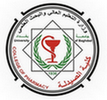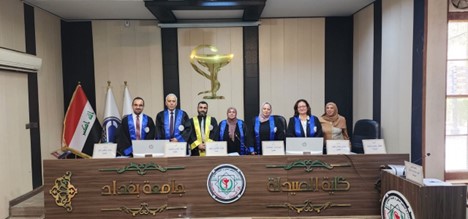The College of Pharmacy discussed the PhD dissertation entitled ”Ondansetron-Loaded Invasomes as Transdermal Delivery System: Preparation, Characterization, and Ex vivo/In vivo Study” by the student, Omar S. Salih, and the supervisor, Assistant Professor Dr. Intidhar J. Al-Akam, at the Pharmaceutics Department. The study aimed to develop ondansetron formulations for the treatment of vomiting in the form of invasome vesicles as an innovative system for drug delivery through the skin, as they enhance the permeability of drugs through the skin layers, which poses a challenge for some poorly penetrating drugs, and also to enhance the effectiveness and duration of action of some drugs that suffer from early metabolism in the liver, which may require multiple daily doses to have a therapeutic effect. The study included the preparation of ondansetron-loaded invasome vesicles efficiently and reproducibly using the mechanical dispersion method. The dispersion containing limonene and a mixture of lecithin and ethanol was found to be optimal, with desirable results compared to other dispersions. Results obtained from ex vivo release and permeation studies showed enhanced release and permeation of ondansetron using a low ratio of lecithin (egg lecithin: soy lecithin) and a high ratio of limonene. The prepared formulation components facilitated the release and penetration of ondansetron, improving therapeutic efficiency by providing a single daily dose. The optimized gel formulation showed improvements in skin penetration, stability, safe use, and effective delivery of ondansetron through the skin, highlighting its benefits as a delivery system for ondansetron to enhance its therapeutic potential. The study recommended future studies focusing on improving formulation compositions to enhance stability and penetration of the formulations and exploring different sets of additives to achieve improved formulation efficiency and storage stability. Future studies can delve deeper into the mechanisms of ondansetron penetration from the formulations, including the effect of different excipients on the permeation process.




